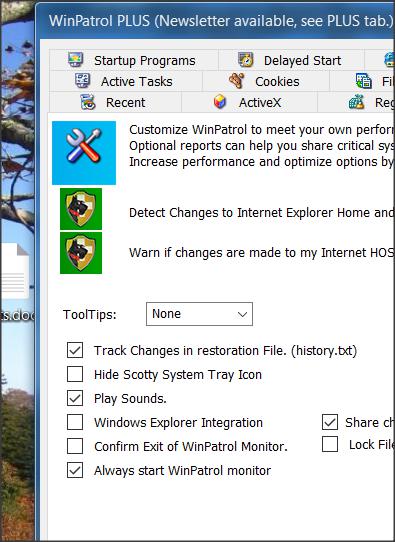

- Appdata microsoft windows start menu programs startup install#
- Appdata microsoft windows start menu programs startup full#
- Appdata microsoft windows start menu programs startup windows 10#
- Appdata microsoft windows start menu programs startup portable#
- Appdata microsoft windows start menu programs startup Offline#
Value: "C:\Program Files\HyperSnap 8\HprSnap8.exe" And Hypersnap was successfully loaded after logon. What it does is: It creates a registry entry in:Ĭomputer\HKEY_CURRENT_USER\Software\Microsoft\Windows\CurrentVersion\Run So this application doesn't make use of the Shell:Startup folder, but it uses the RUN-Key in the registry. (You may copy the text below and paste it in the Command. Type the following commands below and press ENTER after typing each command. To do so, click Start, click All Programs, click Accessories, right-click Command Prompt, and then click Run as administrator.
Appdata microsoft windows start menu programs startup full#
Autoruns also shows you the full list of Registry and file locations where. Use Start - Computer OR Windows Explorer to navigate to that. Right Click Start Button - Explorer All Users and navigate to that folder. Within the application, I selected to start up with windows. Follow these steps to resolve the problem: Open an elevated Command Prompt window. 'C:\ProgramData\Microsoft\Windows\Start Menu\Programs\Startup'.
Appdata microsoft windows start menu programs startup portable#
I used a portable application called FreeDownloadManager (FDM) for testing. Finally, i wondered why other applications can start up with windows. But even if I allow it to all 'users', it doesn't work in HyperSnap. By default, creation of symbolic links is only allowed for local administrators. They were create with Program Folders Startup selected (shortcut was to display a message when user logs in to VDI). I have created a few (errant) shortcuts with UEM that I need to remove. Microsoft implemented this to protect the system from hackers creating startup folder items. Shortcuts created by UEM (9.7) need removing. I also checked a security Setting (secpol.msc) called 'Create symbolic links'. Since I can't make our users local administrators, nor make them automatically run everything in administrative context, this doesn't help. Which gives me a "Administrator privilege required for this operation.". I used powershell to simulate the creation of a symlink in the shell:startup folder.

I changed our Folder-Redirection settings back to Microsoft default. What I was able to reproduce though is, that it does work for local user accounts (which don't receive GPO, because the accounts don't belong to our domain). 5-After this the app should auto-start when you start Windows. 4-The will open a window with 'Allow this app to', select the option 'Auto-start on device login' and click on Allow.
Appdata microsoft windows start menu programs startup install#
I reviewed all policies, but couldn't identify the reason for the hypersnap startup lnk file not being created. 3-Click on the Menu (.) > Apps > Install this site as an app.
Appdata microsoft windows start menu programs startup windows 10#
I used a vanilla Windows 10 device and experienced the same issue, if the device is joined to our domain and recieving our Group-Policies. I don't see any error message, nor a hint in the procmon trace. According to procmon.exe, Hypersnap doesn't even try to write the lnk file. I have a File called Update.exe in my C:UsersPimparooAppDataRoamingMicrosoftWindowsStart MenuProgramsStartup file location I saw other topics and it said it was a Microsoft teams update. But Hypersnap still didn't write the file. Example for a user's shell:startup folder: \\server\share$\somefoldernames\AppData\Microsoft\Windows\Start I tried to disconnect the drive and used 'Subst x: c:\users\public' for testing.
Appdata microsoft windows start menu programs startup Offline#
Our users have their startup folder redirected (Profile redirected folders) to a personal network drive, which is also using Offline Files for sync. If I select the option 'For all users on this computer', Hypersnap successfully writes a file: "C:\ProgramData\Microsoft\Windows\Start Menu\Programs\Startup\HyperSnap 8.lnk". Even not, if the user is a local administrator. If I select the option 'Auto-start with windows', HyperSnap doesn't seem to try to write a lnk-file to the user's startup folder (shell:startup). I am sorry if there are other similar topics and if you think that my question matches exactly, please link those threads.

Our affected Systems: Wind(64bit) HyperSnap 8.16.07 (64bit) Users don't have local administrative permissions. Or maybe I should just remove the programs from C:Users(User-Name)AppDataRoamingMicrosoftWindowsStart MenuProgramsStartup. Also, HyperSnap is never added to the AutoStart folder of the user. Hello, our user's experience, that the 'Auto-start with windows' option in the 'Startup and Tray Icon' window is blank again, after closing the 'Startup and Tray Icon' window, and reopening it. Startup settings disapear on closing "Startup and Tray Icon" window.


 0 kommentar(er)
0 kommentar(er)
